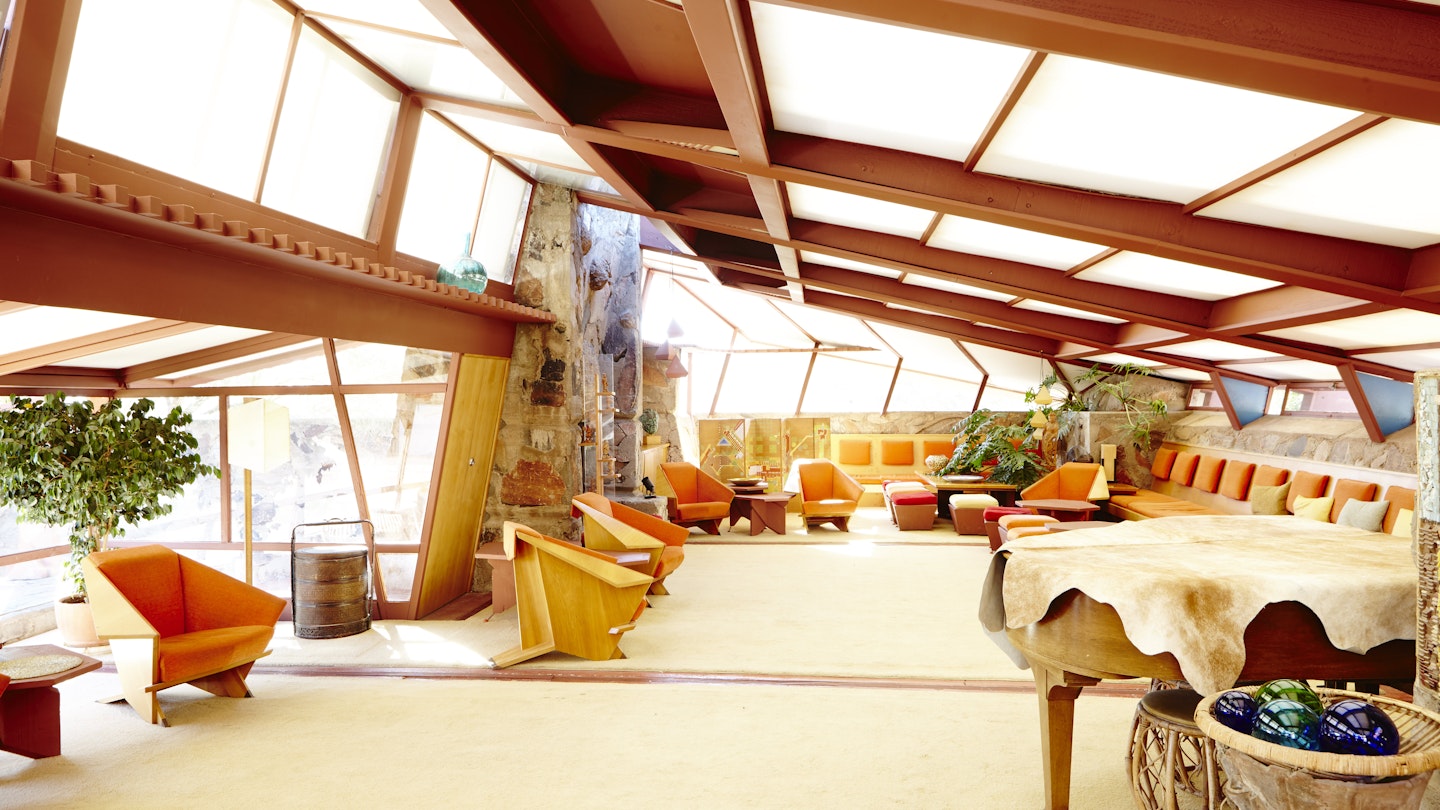Experience Frank Lloyd Wright’s Creations from Home
There’s something about a pandemic lockdown that can inspire architects and designers in all of us. Perhaps you’ve begun to view your home with renewed interest after months of social distancing, wishing for more natural light, a larger kitchen, or even the allure of outdoor space. Furthermore, you may find yourself browsing through apartment ads and real estate listings, searching for that dream place that feels just right.
Now, you can expand your horizons by exploring virtual tours of Frank Lloyd Wright’s masterpieces, which are typically open to the public. Nearly two dozen properties are currently accessible thanks to knowledgeable local experts and digital docents who offer detailed insights into these locations. Famous sites, such as Fallingwater, as well as lesser-known gems like Beth Sholom Synagogue, are available for online exploration.

As Barbara Gordon, Executive Director of the Frank Lloyd Wright Building Conservancy, stated, “It is precisely at this time, when so many are shut inside, that we need to experience beauty and inspiration. Wright’s works bring people together in harmony with the natural world, reminding us that we are all connected, even when we’re apart.”
The #WrightVirtualVisits project is currently taking place, running from April 2 until July 9. Therefore, every Thursday at 1 PM Eastern/10 AM Pacific, participating sites share a brief video tour via social media, creating an engaging online community around Frank Lloyd Wright structures nationwide.
While these tours are free, donations to various Wright sites are encouraged. The ongoing pandemic has severely impacted these iconic destinations’ financial health during the prime touring season. Many rely on public support to maintain these historical buildings, many of which are closing in on (or past) their centenary anniversaries.

Although Frank Lloyd Wright is a household name, many of his designed homes and structures have unfortunately been demolished over the years, even during his lifetime. For instance, he had to reconstruct his famous summer home compound, Taliesin, several times due to a series of fires and personal tragedies, including one incident resulting in the death of his second wife. Therefore, the survival of these structures heavily relies on public interest and ownership.
If you decide to take a virtual tour of a Wright house or continue to reflect on your own home, consider how significant events such as a global pandemic can alter our relationships to space and place. Wright’s architectural style, already established by the 1918 influenza pandemic, departed sharply from the enclosed Victorian styles of his predecessors. He emphasized natural light, open spaces, and harmony with nature—qualities that resonated with the changing desires of Americans seeking healthier, more uplifting living environments post-flu pandemic.
Homes that are easy to clean and promote wellbeing became increasingly attractive, and it is evident that Wright’s Prairie Style left a lasting impression on American suburbs well into the mid-20th century. Consequently, take a virtual tour, exploring treasures like Taliesin West and Unity Temple, as well as the hidden beauty of places like Gordon House. Reflect on how future generations might reshape home design after the impact of COVID-19 has become a part of history.




